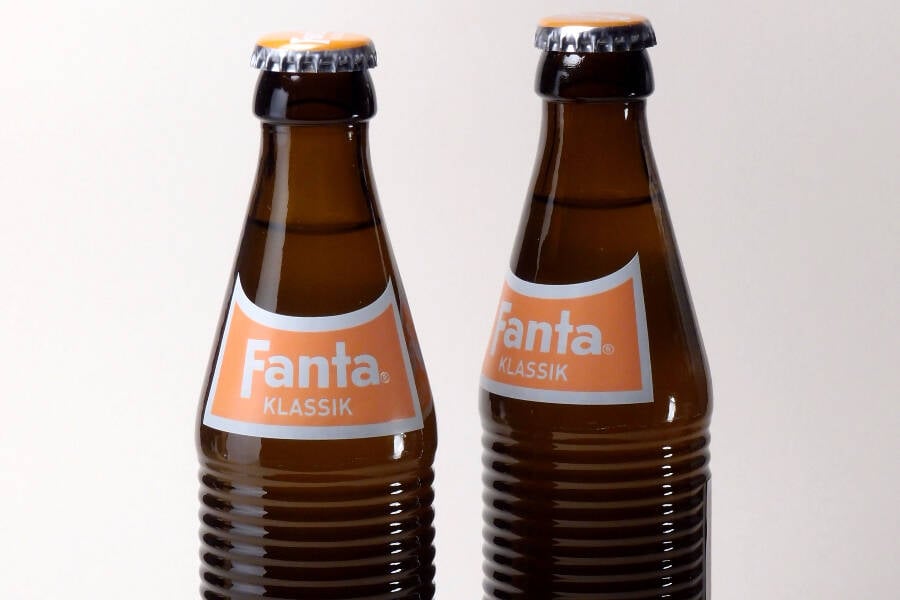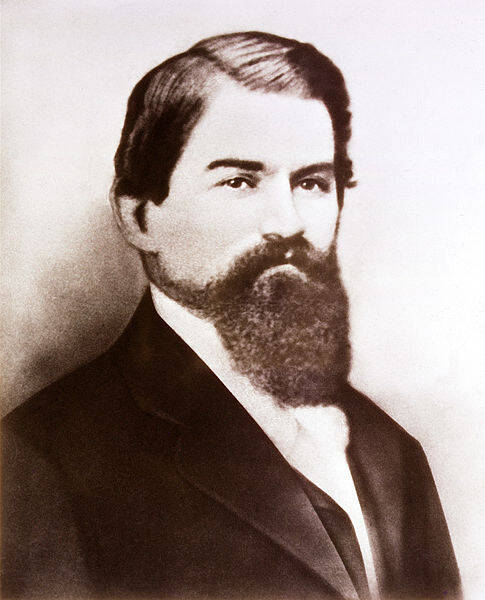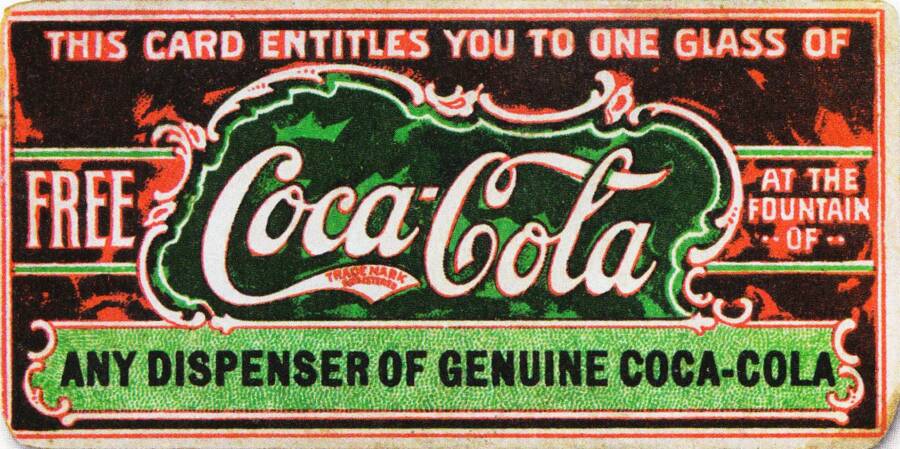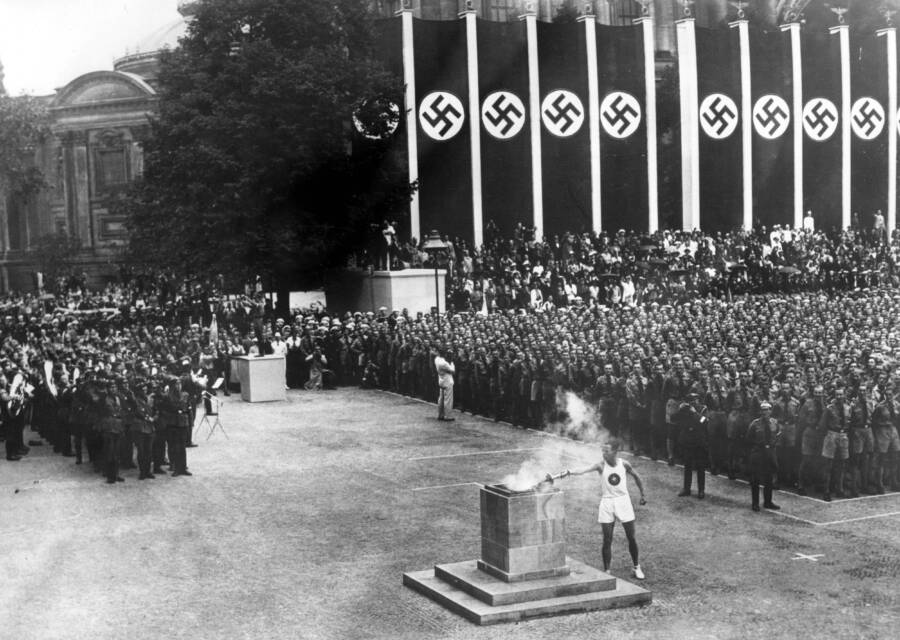The German businessman who invented Fanta marketed it in Nazi Germany as an alternative to Coca-Cola during World War II.

Wikimedia CommonsFanta Klassik, a throwback to the original Fanta created during World War II.
Fanta is one of the most popular soft drinks in the world. For over 80 years, the Coca-Cola Company beverage has delighted consumers with its bold, fruity flavors. But it wouldn’t exist today if not for a man named Max Keith, his unwavering allegiance to Coca-Cola, and the economy of Nazi Germany.
It may sound strange, but it’s true: Fanta only came into existence because America joined the fight against the Nazis during World War II, meaning Coca-Cola’s German subsidiary could no longer import the ingredients necessary to make Coke. Keith needed a drink he could market to the Germans, and Fanta was born.
And the full history of how Fanta came to be is much darker than one might expect.
A Brief History Of Coca-Cola
Coca-Cola is arguably the world’s most famous soft drink, and for good reason. First invented in 1886 by Dr. John Stith Pemberton, the iconic soda is made using the coca leaf — the very same leaf used to make the highly addictive drug, cocaine. And while there’s no cocaine in Coca-Cola today, its original recipe contained trace amounts of the drug.
But why would Pemberton use the coca leaf for an all-ages soft drink?
Pemberton was a Confederate Civil War veteran. After Pemberton sustained a saber wound during a battle, he was treated with morphine and soon became addicted.

Public DomainJohn Pemberton, the doctor who invented Coca-Cola.
When he invented Coke, Pemberton hadn’t actually been looking to create the world’s most popular soft drink. He was looking to find an alternative painkiller to morphine. He named the product “Coca-Cola” because it was made from the coca leaf and the kola nut, and began selling it at a local pharmacy in Atlanta for five cents a glass.
Needless to say, it was a massive success. In less than a decade, Coca-Cola could be found in every American state and territory. By 1920, the company had expanded into the European market.
Coca-Cola Arrives In Germany

Public DomainA coupon for a free glass of Coke from 1888, considered to be the very first coupon ever.
Come 1929, Coca-Cola had opened a bottling facility in Germany, and the German public was drinking it regularly.
The man in charge of Coca-Cola Deutschland was an American expatriate named Ray Rivington Powers, a charismatic salesman who often promised potential clients that they’d be rich if they purchased Coke. According to Business Insider, Powers was able to skyrocket sales of Coca-Cola from 6,000 to 100,000 cases per year.
Unfortunately, Powers was less skilled when it came to bookkeeping. He left bank statements unopened and frequently failed to pay bills, leaving the German subsidiary in a financially messy state.
Then, in 1933, everything changed. Adolf Hitler was appointed chancellor of Germany. The Third Reich began. And Max Keith took over Coca-Cola Deutschland.
Max Keith, The Man Who Created Fanta

Public Domain / Coca-ColaMax Keith, the man in charge of Coca-Cola’s German subsidiary during World War II.
Max Keith was a German-born businessman with an unwavering dedication to Coca-Cola. He was described as an imposing figure who was born to lead, and he was determined to fix Coca-Cola’s German subsidiary.
The German economy was booming, and under Hitler, a new sense of nationalistic pride was growing among the people. Keith knew that to dig Coca-Cola out of the financial hole Powers had put it in, he had to capitalize on that sense of nationalism. He had to market Coca-Cola as a drink worthy of being consumed by the German people.
As Mark Pendergrast, author of For God, Country, and Coca-Cola, told Atlas Obscura, “[Keith] valued his allegiance to the drink and to the company more than his allegiance to his own country.”
For the Coca-Cola Company back in America, headed at the time by Robert Woodruff, sales were sales. They, like many other American companies, often turned a blind eye to Hitler’s increasingly violent rhetoric in order to retain German business.
In fact, the Coca-Cola Company even sponsored the 1936 Berlin Olympics, creating banners that featured the Coca-Cola logo alongside the swastika.

Zuma Press Inc. / Alamy StockA German athlete lighting the torch at the opening ceremony of the 1936 Berlin Olympics.
Even when Hitler’s invasion of Europe began in 1939, the Atlanta-based Coca-Cola Company continued to supply its German subsidiary with the necessary ingredients. Meanwhile, Keith instigated an invasion of his own, following German troops into conquered countries and taking over their respective Coca-Cola businesses.
Although Keith never actually joined the Nazi Party himself, he clearly saw no problem in using its influence to grow the Coca-Cola brand. While presiding over the 10th anniversary of Coca-Cola Deutschland in 1939, Keith ordered a mass Sieg-Heil, or Nazi salute, in honor of Hitler’s 50th birthday, “to commemorate our deepest admiration for our Fuhrer.”
But the situation grew more complicated for Keith on Dec. 7, 1941, when Japan launched an attack on Pearl Harbor.
A Lack Of Supplies Led To The Creation Of Fanta
With the United States now fighting against the Axis powers during World War II, American companies couldn’t exactly conduct business in enemy territory. As a result, the Coca-Cola HQ in Atlanta had to cut off communications with Max Keith and stop sending its top-secret 7X flavoring to the German subsidiary.
Keith now found himself in a predicament: He couldn’t make Coke, and he was at risk of losing the company if the Nazi government decided to seize it. He needed something new, something specifically for the German market, and he needed it fast. But because wartime rationing limited the ingredients available to him, he didn’t have a ton of options.
Keith quickly gathered his chemists and came up with a recipe using what he could — essentially, Pendergrast said, the “leftovers of the leftovers.” The recipe involved apple fibers and pulp from cider pressing, beet sugar, fruit shavings, and whey. As for the name, Keith told his team to explore their fantasies, and a salesman named Joe Knipp came up with “Fanta.”

INTERFOTO / Alamy Stock PhotoA vintage German advertisement for Fanta.
Despite the fact that this original recipe for Fanta was likely nowhere near as good as the Coca-Cola everyone had become used to, it sold remarkably well. This was likely due to the fact that other options were gradually becoming harder and harder to get ahold of, making Fanta the sweetest beverage available.
What’s more, Fanta also became a popular replacement sweetener for things like soups and stews, since sugar was severely rationed at the time.
And since Keith had basically taken over the other European Coca-Cola facilities, he was able to spread Fanta across the continent, which in turn kept other subsidiaries from shutting down. By the time the war was over, the German branch had sold roughly three million cases of Fanta.
Fanta’s Legacy Today
When the Allies proved victorious over the Axis powers, Max Keith handed over the profits from Fanta to the Coca-Cola HQ in Atlanta — and the company basically regarded him as a hero, lauding him for keeping the business running in Europe during the war. For his efforts, he was ultimately given command of Coca-Cola Europe.
Coca-Cola retained the copyright to Fanta, too, so they made sure not to let it go to waste.
In April 1955, they reintroduced Fanta in Italy as an orange-flavored soda. Three years later, it made its way back to the United States, and it is still enjoyed by people all across the world today.
Despite Fanta’s dark, Nazi-influenced origins, Coca-Cola was largely able to distance itself from the Third Reich. That is, until Fanta’s 75th anniversary came along in 2015. That year, the company released an ad referring to the “Good Old Times” — which inevitably led to backlash, as many saw the campaign as a reference to World War II-era Germany. The company withdrew the ad.
Still, Fanta’s history hasn’t stopped people from drinking it. Over the years, it has continued to evolve and reinvent itself, coming up with a portfolio of new flavors and expanding to countries all over the world — making it a far cry from the drink made from the “leftovers of the leftovers” for Nazi Germany.
After learning about the origins of Fanta, read about the surprising origins of the Christmas Tree. Or, learn all about who invented pizza and how it became the world’s most popular flatbread.





